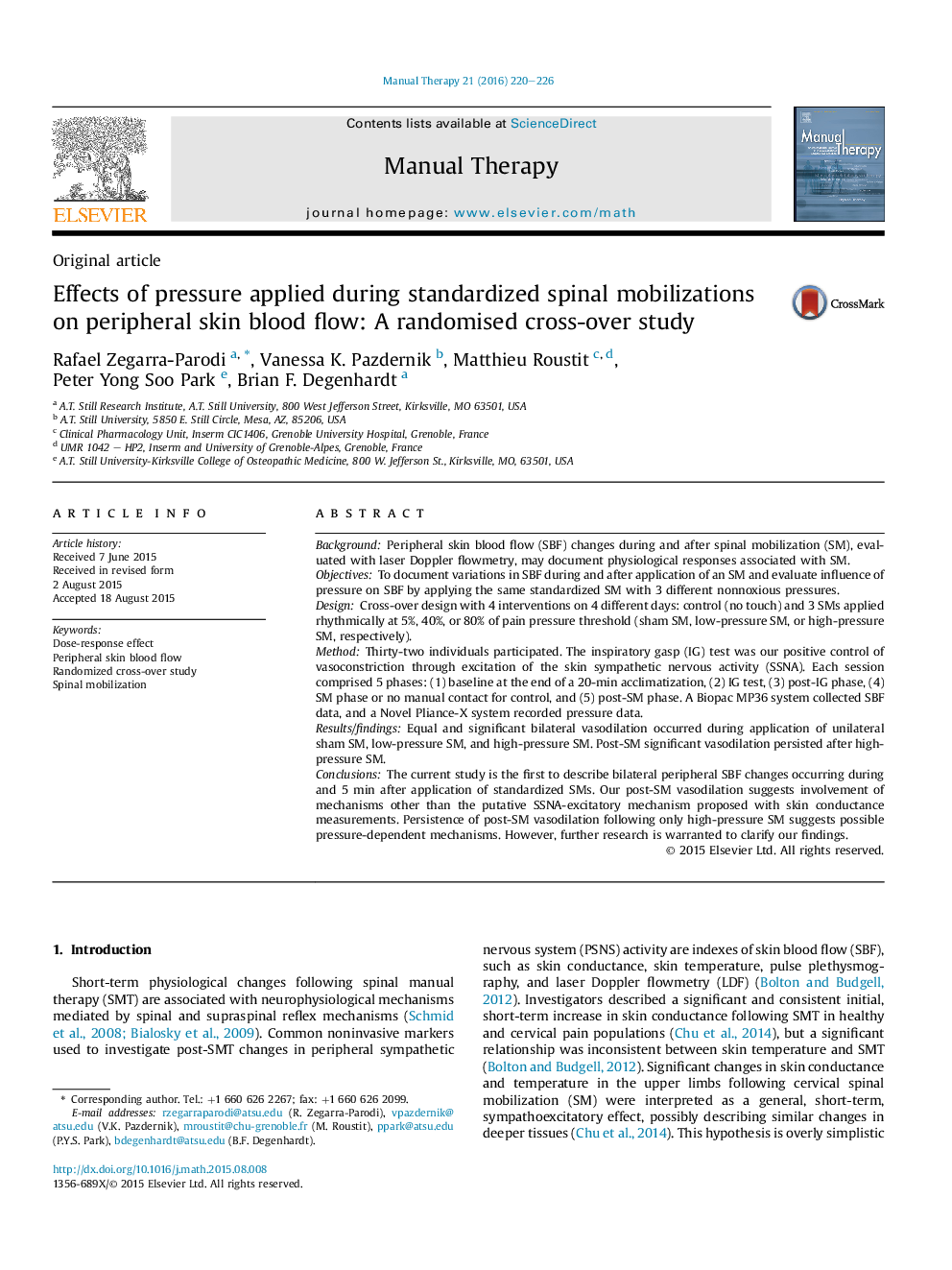| Article ID | Journal | Published Year | Pages | File Type |
|---|---|---|---|---|
| 5864619 | Manual Therapy | 2016 | 7 Pages |
â¢Unilateral spinal mobilizations induce equal, significant bilateral vasodilation.â¢Post-mobilization vasodilation persisted after high-pressure spinal mobilizations.â¢Pressure-dependent mechanisms may explain high-pressure mobilization results.
BackgroundPeripheral skin blood flow (SBF) changes during and after spinal mobilization (SM), evaluated with laser Doppler flowmetry, may document physiological responses associated with SM.ObjectivesTo document variations in SBF during and after application of an SM and evaluate influence of pressure on SBF by applying the same standardized SM with 3 different nonnoxious pressures.DesignCross-over design with 4 interventions on 4 different days: control (no touch) and 3 SMs applied rhythmically at 5%, 40%, or 80% of pain pressure threshold (sham SM, low-pressure SM, or high-pressure SM, respectively).MethodThirty-two individuals participated. The inspiratory gasp (IG) test was our positive control of vasoconstriction through excitation of the skin sympathetic nervous activity (SSNA). Each session comprised 5 phases: (1) baseline at the end of a 20-min acclimatization, (2) IG test, (3) post-IG phase, (4) SM phase or no manual contact for control, and (5) post-SM phase. A Biopac MP36 system collected SBF data, and a Novel Pliance-X system recorded pressure data.Results/findingsEqual and significant bilateral vasodilation occurred during application of unilateral sham SM, low-pressure SM, and high-pressure SM. Post-SM significant vasodilation persisted after high-pressure SM.ConclusionsThe current study is the first to describe bilateral peripheral SBF changes occurring during and 5 min after application of standardized SMs. Our post-SM vasodilation suggests involvement of mechanisms other than the putative SSNA-excitatory mechanism proposed with skin conductance measurements. Persistence of post-SM vasodilation following only high-pressure SM suggests possible pressure-dependent mechanisms. However, further research is warranted to clarify our findings.
